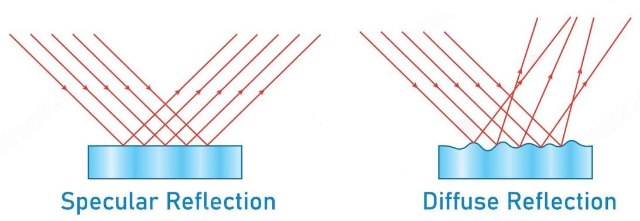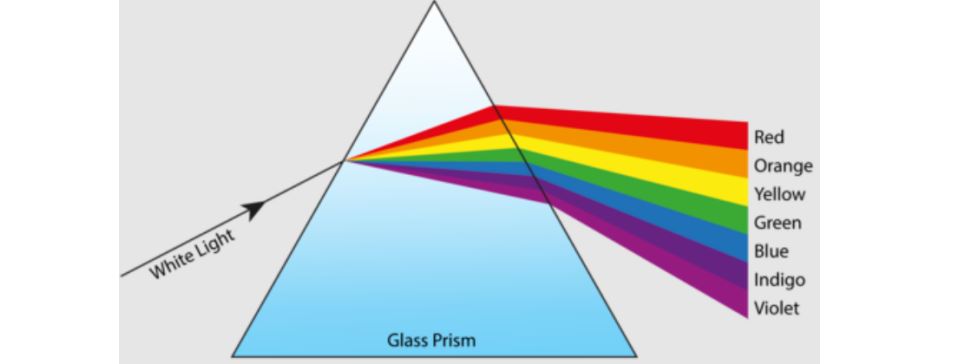Optics in Physics: Optics is a fascinating branch of Physics that studies the behaviour and properties of light, including its interactions with matter and the construction of instruments that use or detect it. Optics usually describes the behaviour of visible, ultraviolet, and infrared light. Because light is a type of electromagnetic radiation, and other forms of electromagnetic radiation such as X-rays, microwaves, and radio waves exhibit similar properties.
| Galileo Galilei, a 17th century scientist, was fascinated by the behavior of light and invented one of the world's first telescopes. He is also reported to be the first person to try and measure the speed of light. |
Three Broad Subfields of Optics
1. Geometric Optics: It deals with the study of light as rays.
2. Physical Optics: It deals with the study of light as waves.
3. Quantum Optics: It deals with the study of light as particles.
In general, we can say that optics is the study of light and the study of how we see different things around us. Here's a breakdown of key concepts and applications of Optics:
Concepts in Optics: Light and Its Properties
Light is a form of electromagnetic radiation, existing as a wave and exhibiting particle-like behavior (photons). The Sun is the primary source of light which is utilised by all planets to produce energy.
Light has various interesting properties which are explained below:
1. Reflection
When light strikes a surface, it bounces back. The angle of reflection is equal to the angle of incidence, governed by the Laws of Reflection. Mirrors use this principle to create our duplicate images.
We are able to see all sorts of objects around us because light reflects off of them. After a light source hits the surface of an object, it gets reflected in one of the two ways: Specular or Diffuse.
- Specular reflection: Specular reflection occurs on smooth surfaces, such as clear, still water and a smooth surface like mirroe. In these cases, all the rays of light reflect at the same angle. Each individual ray of light follows the law of reflection, i.e., the angle of reflection is equal to the angle of incidence.
- Diffuse reflection: Diffuse reflection occurs when light hits an object with a rough surface (like a road) and is bounced back in a scattered way, in all different directions. Most of the everyday objects cause diffuse reflection because they have tiny imperfections on their surfaces.

2. Refraction
When light travels from one medium (e.g., air) to another (e.g., water), it bends due to a change in its speed. This phenomenon is termed as refraction of light. It is used in lenses to focus or diverge light.
Example: Light rays appear to bend upon entering water. Refraction occurs at the boundary of the two media: air and water. This occurs due to the light slowing down slightly as it changes from the air medium to water.
Refraction of light through water is depicted in the following diagram:
3. Direction of Bending
When light passes into a more dense material (in this case, water), it bends away from the surface between the 2 materials. The light entering the glass of water is called the incident ray, and the light traveling through the water is the refracted ray.
4. Diffraction
Light can bend around corners or spread out when passing through a narrow slit or encountering an edge. More specifically when applied to light, diffraction of light occurs when a light wave passes by a corner or through an opening or slit that is physically the approximate size of, or even smaller than that light’s wavelength. The amount of bending depends on the relative size of the wavelength of light to the size of the opening.
Splitting of white light into the constituent colour components of white light is one form of diffraction
Example: CD/DVD colors: The shiny surface of a CD or DVD has microscopic grooves etched onto it. When light hits these grooves, it diffracts and creates the rainbow-like pattern you see. The grooves act like a diffraction grating, separating the light into its component colors.
5. Scattering
Scattering of light is the phenomenon in which light rays deviate from their original path upon striking an obstacle like dust, gas molecules, or water vapors.
Example: Blue colour of the sky: Out of the seven components present in sunlight, blue colour is scattered the most by the particles present in the atmosphere and hence, the sky appears blue.
| How is Diffraction of light different that Scattering? Scattering is the ability of particles to absorb light and scatter it in all directions while Diffraction is the bending of light when it encounters an obstacle or an opening. |
Related|
- Mechanics: Definition, Types, Concepts, Applications and More
- Maxwell’s Equation: Definition, Laws, Explanation And Formulas!
- Refraction Of Light: Definition, Laws, Applications And FAQs
- Newton’s Laws Of Motion: Definition, Formula, Applications And Examples
6. Dispersion
It is this process of white light splitting into its constituent colours. When white light is transmitted through a prism, it is split into seven component colours.
Example: A rainbow is an example of white light dispersion. A large number of tiny droplets of water remain hanging in the air shortly after the rain. Each drop acts as a tiny prism. When sunlight strikes these droplets, it divides into seven distinct colours. A continuous band of seven colors is formed by the scattered light which we call a rainbow.
7. Interference
Light waves can interact and either amplify or cancel each other out depending on their relative phases. This principle is used in holography and thin-film coatings.
8. Polarization
Light waves can vibrate in different orientations. Polarization filters selectively allow light waves with a specific orientation to pass through.
9. Speed of Light
The rate at which the light travels in free space is called the Speed of light. Light travels slightly slower through water, as water is more dense than air.
Applications of Optics
- Vision correction:Glasses and contact lenses use refraction to correct vision problems like nearsightedness and farsightedness.
- Optical instruments:Microscopes and telescopes utilize lenses and mirrors to magnify or gather light for observing distant or tiny objects.
- Lasers:These devices produce a highly focused beam of light with a specific wavelength. Applications include laser surgery, barcode scanners, and communication via fiber optic cables.
- Displays:LCD screens and televisions rely on the manipulation of light properties to create images.
- Optical sensors:Cameras capture light to create photographs and videos. Optical sensors are also used in medical imaging technologies like X-rays and CT scans.
- Waveguides:Fiber optic cables transmit light signals over long distances, forming the backbone of the widely sperad internet and telecommunication infrastructure.


Comments
All Comments (0)
Join the conversation